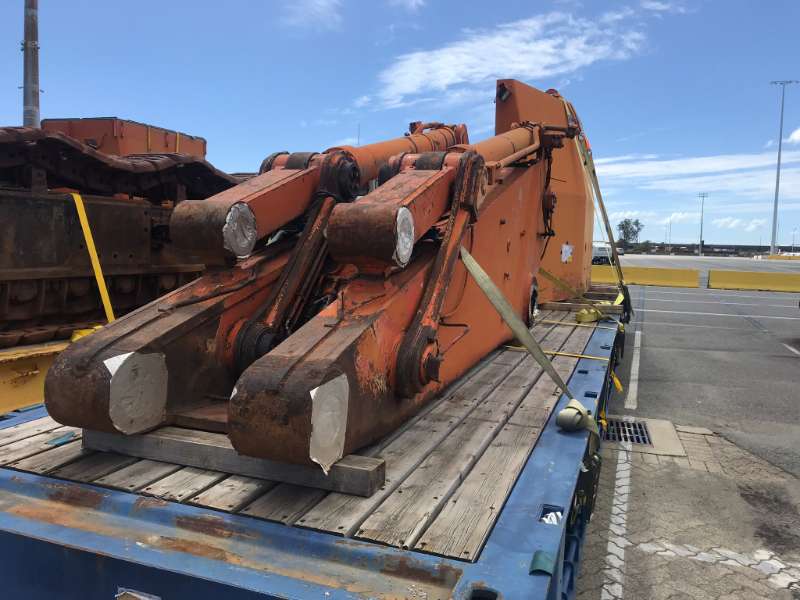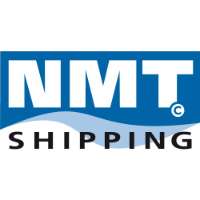Lashing heavy machinery, packing, and securing cargo in containers – selecting the correct restraints ensures compliant, safe, and reliable transportation while protecting life during loading, at sea, and at discharge. At Custom Brokers, the leading customs broker and expert in freight forwarding in Australia, we carefully select our business partnerships for securing your cargo. These partners ensure that the appropriate lashing equipment – designed for your type of cargo – is used correctly, is in good condition, and meets International Maritime Organization (IMO) safety standards. Therefore, this information is provided as general information only.
Safe shipping solutions tailored to your requirements. Every load, every time.
Following is a list of restraints commonly used to prevent cargo from shifting during transit. Transversal and longitudinal lashing is used to prevent up-and-down or side-to-side movement of your cargo. As each shipment is unique, with different dimensions, weight, and materials (i.e., fragile), the most efficient solution is usually to combine the use of a couple of different restraints to secure your cargo safely. The number of restraints required is calculated by dividing the weight of your cargo by the Maximum Securing Load (MSL) values of each restraint used (rounded up). The MSL values are provided by the manufacturer (or in vessel guidelines) and also on tags attached to the restraint. They are a percentage of the breaking load – the force approximately required to break the restraint.
BLOCKING

Blocking is used in the front, back, and/or sides of cargo to prevent movement. Timber dunnage (lengths of timber), sometimes with wooden or plastic wheel chocks, packs cargo in a container to prevent lateral movement of a load – from moving side-to-side or forward-and-backward. MSL rating: 0.3 kN per cm² normal to the grain. Suitable for: containerised, flat rack, mafi, and pallets, any space between cargo and container, rack, etc. Freight forwarding in Australia often involves using these methods to secure a variety of cargo types.
STEEL DECKEYES, RINGS, SHACKLES, TURNBUCKLES

Attachment points on the vessels for restraints (listed below) to secure your cargo. MSL rating: 50% of breaking strength. Suitable for: all types of cargo secured to the vessel. These are critical components that every customs broker should be familiar with to ensure cargo security.
WEBBED STRAPS

Known as lashing straps, this tightly woven polyester webbing is quick and easy to use in specific angles or directions, with protectors on “cutting edges” to prevent deterioration. No knots! The straps are secured with hooks and locked buckles or ratchets to tension and restrain your cargo.
MSL rating: 50% of breaking strength.
Suitable for: RoRo cargo, such as machinery, vehicles, etc., containerised, flat racks, and used directly on the vessel anchorage points. Many freight forwarders in Australia utilise these straps for their versatility and strength.
CHAINS

Steel lashing chains with high-strength links are used to secure heavy loads properly. They are tensioned by a tension tool. As they are quick to be attached, they are commonly used for RoRo cargo.
MSL rating: 50% of breaking strength.
Suitable for: RoRo cargo, such as machinery, vehicles, etc. As a freight forwarder in Australia, we often rely on chains for securing heavy machinery due to their durability.
TENSIONERS & BINDERS

Steel or aluminium strapping tools are used to tension lashing chains to secure cargo on pallets (or in shipping containers) or to tension chains securing cargo onto RoRo vessels. The correct tension ensures a secure, safe hold for your cargo during transit. Usually manual tools - or hydraulic (depending on the restraint or cargo). Suitable for: tensioning lashing chains. Proper use of these tools is crucial for any customs broker to maintain the safety and integrity of cargo.
TWIST LOCKS

Twist locks are portable lashing components used to mechanically lock (bolt or weld) shipping containers to the main structure of the vessel. MSL rating: e.g., 5 tonnes. Suitable for: shipping containers. These are widely used by freight forwarders in Australia for securing containers efficiently.
WELDING

Machinery or other heavy project cargoes are sometimes lifted onto the vessel deck (or another main structural part of the ship) and then welded in place to achieve docking. Suitable for: heavy/out of gauge (OOG) cargo, lift-on/lift-off (LoLo) cargo. This technique is often employed by freight forwarders in Australia to ensure the safe transportation of oversized loads.
TRESTLES

Trestles are used to mechanically lock fully loaded semi-trailers on board the vessel. These ensure safe stowage and efficient loading (and unloading) processes at shipping terminals. MSL rating: e.g., 20 tonnes. Suitable for: semi-trailers. Proper use of trestles is a fundamental part of freight forwarding in Australia to handle semi-trailers securely.
COULD IT GO WRONG?

When restraints are incorrectly used, cargo is overweight, or imbalanced (not loaded with the centre of gravity in mind), or restraints have wear and tear damage, dirt, or are old or broken/damaged in some way, your cargo could move when the vessel changes position at sea, or during the loading/unloading stages – putting personnel at risk of injury (or possible death), as well as causing damage to other cargo, the vessel, and other infrastructure. These risks make it vital for every customs broker and freight forwarder in Australia to adhere to best practices and safety standards.
WHAT CAN WE DO?
Custom Brokers may scope initial restraint requirements when your cargo quotation is generated, noting your cargo must be loaded properly (not overloaded or imbalanced) and contents correctly declared. Our business partnerships will professionally secure your cargo, ensuring your shipment is compliant with International Maritime Organization (IMO) safety standards. We check that your cargo is restrained correctly – including the type of restraints, the number of restraints, and the location/angles used.
The International Maritime Organization (IMO) safety standards, restraint manufacturer anchorage point and securing recommendations, and the vessel lashing and loading guide must all be followed. Proper planning and logistics can significantly reduce risks to transport and supply chain workers, the vessel and other infrastructure involved, your cargo, and the cargo of others. Get a free quote today and secure your cargo with the best freight forwarder in Australia!
The International Maritime Organization (IMO) safety standards, restraint manufacturer anchorage point and securing recommendations, and the vessel lashing and loading guide must all be followed. Proper planning and logistics can significantly reduce risks to transport and supply chain workers, the vessel and other infrastructure involved, your cargo, and the cargo of others. Get a free quote today and secure your cargo with the best freight forwarder in Australia!



































